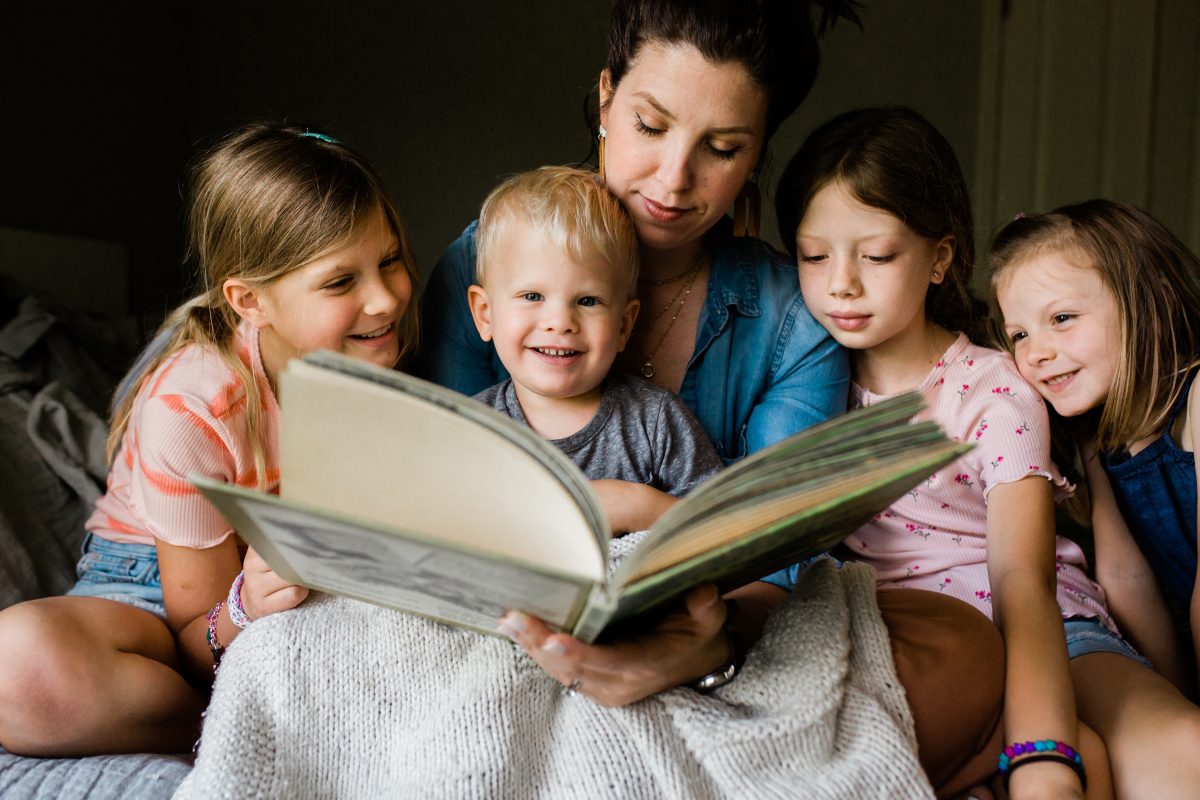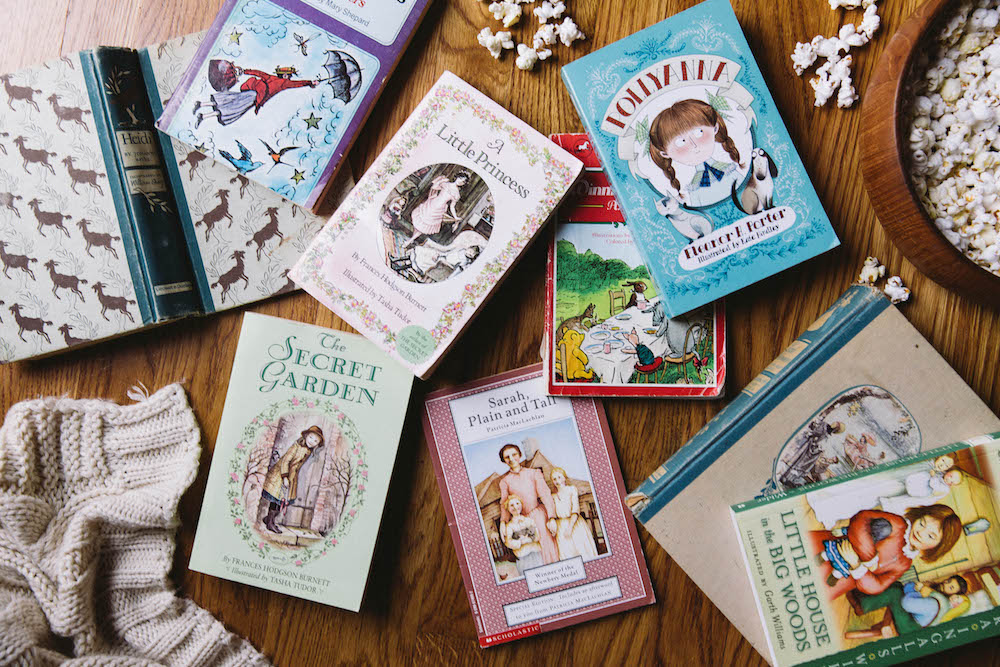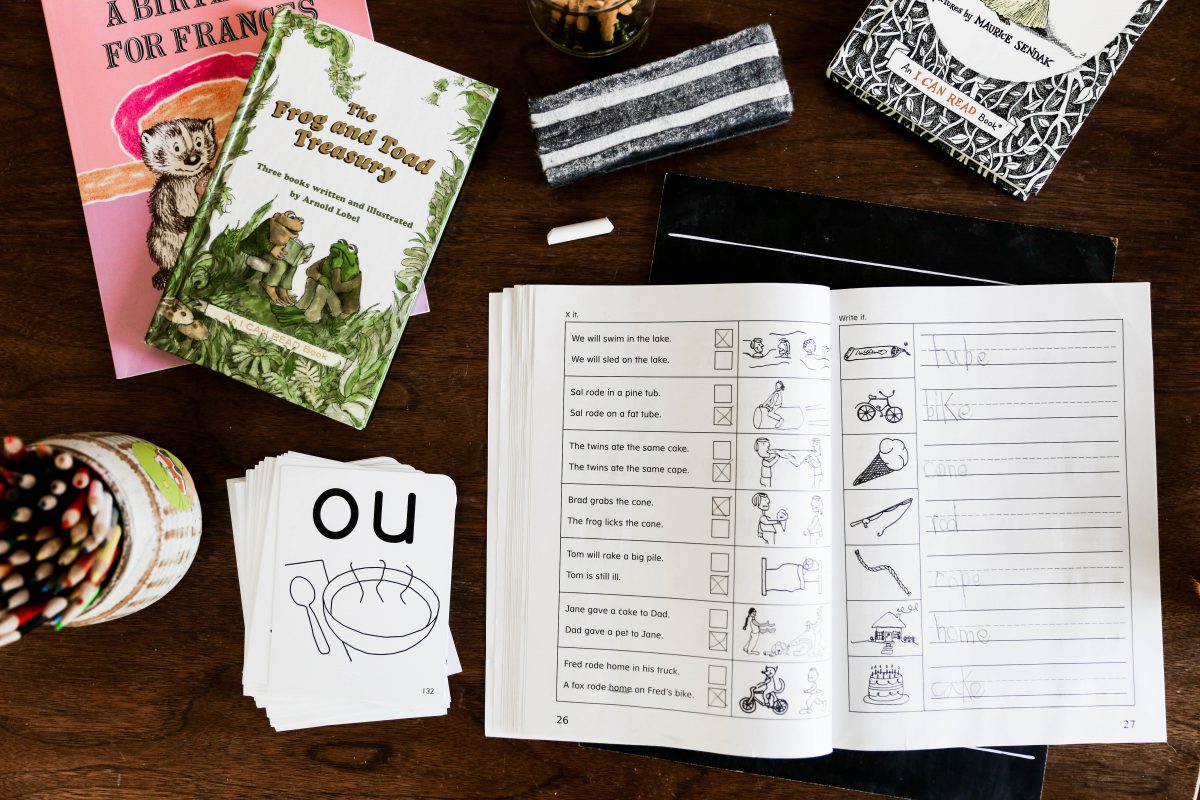One way that I’ve simplified our homeschool (and homeschool planning) is by consolidating all of our structured learning into two simple learning formats: Reading Aloud and Table Time.
While we use a lot of natural learning (games, baking, field trips, play) these two formats cover the structured part of our learning day. They represent the “guided” parts of our homeschool (You can read more about our guided approach to unschooling here!)
There are infinite ways to engage your children in learning. The idea behind these frameworks is to simplify our structured learning time as much as we can with some high-yield activities. When we do this, we have plenty of room for other types of learning to flow in and out of our homeschool. This is one way that I know I’m hitting all of my basics on a regular routine.

Format 1: Reading Aloud
If kale is a superfood, then reading aloud is a super routine, my friends. It covers the overlapping subjects of science, history, literature and geography in an engaging and connective format. It also builds vocabulary, reading comprehension and gives children access to sophisticated language patterns on a regular basis. Concepts conveyed through story embed the information into a strong memory template, as it engages the emotional side of our brains.
Reading aloud is one of the very best practices for a rich education. It is estimated that we can recall facts up to twenty-two times more effectively when taken in through story rather than isolated data. When we read to a child, a pleasure message is sent to the brain, making learning a positive and nurturing experience that our children want to repeat.
Rather than textbooks or a scripted curriculum, we use a literature-based curriculum composed of whole books. A literature-based family style curriculum can make this really easy! We use The Peaceful Press Elementary Guides–they’re my favorite. There are also some other wonderful options like Beautiful Feet Books and book lists from Sonlight. Many Charlotte Mason families use Ambleside Online.

When you have mixed ages learning together, one of the methods you can use is to “teach up,” or in this case, “read up.” So don’t shy away from sophisticated content! A child’s listening comprehension is always higher than their reading comprehension level. We have a mix of picture books, chapter books, biographies and high-quality non fiction in our basket (this is provided through our literature based curriculum, plus some of my own selections!) When you do this, each of your children will engage and express at their own level. And don’t be surprised when a well-written and illustrated picture book draws in even the most reluctant older children!
All you need to do is place your books into a basket near the couch and read a little from them daily. (Hence, the Morning Basket!) Read from your basket of books for as long as attention spans allow. We read aloud every day for 30-60 minutes, depending on everyone’s ability that day. This time will naturally lead to highly engaging instruction time that doesn’t feel fabricated or forced. We worry far less about pages read and topics covered and focus instead on reading widely and making reading aloud a consistent, daily practice. If you want to adhere to a timeline (most literature-based curriculums have one included) you can, but we haven’t ever found it necessary. We just read through the books suggested!

During this time we also fit in Bible reading, devotionals and anything else we want to do as a family. You can also take this opportunity to help younger children with practical knowledge such as calendar skills and memorization.
Let children play legos, use play dough, draw or lay upside down on the couch. This should be a cozy and connective time of learning together!
Our read aloud doesn’t always happen in the mornings, and it doesn’t need to! Click here to learn about when we schedule our learning time.
Format 2: Table Time
Table time is where we do the skill-building portion of learning. This is the time where math, phonics and writing practice is done. (Ever heard of “The Three R’s?” That’s what we do here!) Plug your math, phonics and writing curriculum into Table Time.
Math is always a staple for us, but we work through at our own pace making sure that each child feels confident and not rushed. Levels do not matter nearly as much as comprehension and mastery.
For language arts, early learners will need basic phonics and handwriting practice. As your child emerges to become a more fluent reader, you can replace phonics with spelling practice.

The 15 Minute Rule
For Table Time do each of the following subjects for 15 minutes. This is all you’ll need in the early years.
1.) 15 minutes of phonics.
2.) 15 minutes of math.
3.) 15 minutes of writing practice
Where do we get fifteen minutes from? This comes from Charlotte Mason’s philosophy of “short lessons.” The idea behind this concept is that you keep lessons short enough to keep children coming back for more. (As opposed to complete dread and avoidance–for both of you! Sustainability is a more powerful machine than intensity.)
This time frame also happens to nicely match a child’s attention span at this age. The spirit behind this rule isn’t to box you in, but to give you a reasonable grid to operate from. I think you’ll be surprised to find how far 15-20 minutes of quality engagement will take you.
When and How Much?
We practice both of these formats four days per week for about one to two hours a day. I use a model called the Four Way School Day to help me design a flexible daily routine. How does that work? We simply remix these two essential learning formats into different time blocks to create several framework options for our daily rhythm. You can read all about that here!
If you’re having trouble deciding exactly what subjects to include in your day, click here to check out my simple homeschool planning schema.
For candid thoughts on faith, motherhood and homeschooling, subscribe to my Substack newsletter!